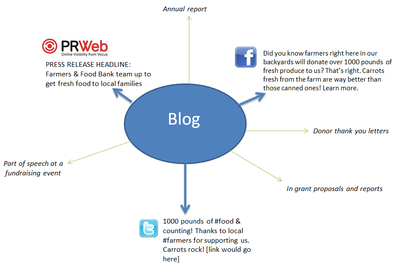[vimeo]http://vimeo.com/34927265[/vimeo]
Why plan?
Why create a marketing plan? It takes time, energy and usually isn’t all that fun. Plus, you have your plan in your head so you should be all set, right?
Wrong.
According to Kivi’s 2012 Trends Report, only 24% of organizations have a written plan that has been approved by leadership. And yet, writing down your goals has been proven to up your odds of achieving them.
With no written plan, you are at risk of falling prey to shiny object syndrome. You will hear about a new social media tool that sounds fab and decide everyone else is using it and you must use it, too. Or a board member will suggest you do a big PR push and off you’ll go, in full pursuit of the latest shiny object.
This is the tail wagging the dog. Maybe these are great ideas, maybe they’re not. It depends on your goals. Twitter, Facebook, PR, websites, blogs, newsletters, annual reports—these are all simply a means to an end. Planning makes sure you achieve your goals in the most effective and efficient way possible.
How to plan?
Now that you’re convinced you should have a written marketing plan, the question is how do you develop one given limited time, money and, let’s be honest, enthusiasm for the task at hand?
Enter the 1, 2, 3 Marketing Tree, a tool I developed to make it simple for you—the mission-motivate of the world—to get laser-focused on your marketing goals and how you’ll achieve them.
The 1, 2, 3 Marketing Tree demystifies marketing and reveals the three questions you really have to ask and answer in order to reach your goals.
- WHAT does marketing success look like for your organization?
- WHO do you need to reach in order to be successful?
- HOW will you reach them?
Ready to get started? Download a free version of the Tree or buy the poster-size version (featured in the video above so you can see it ‘live’) and get planning!




